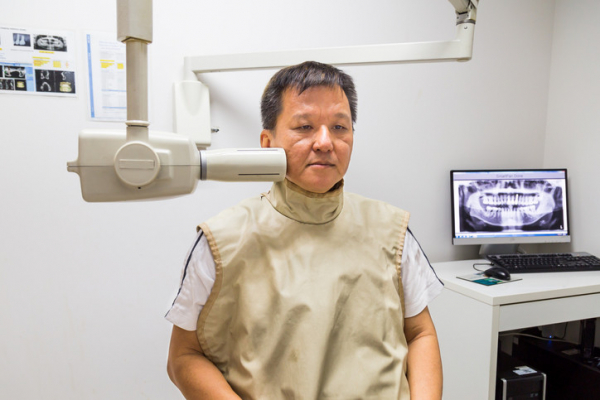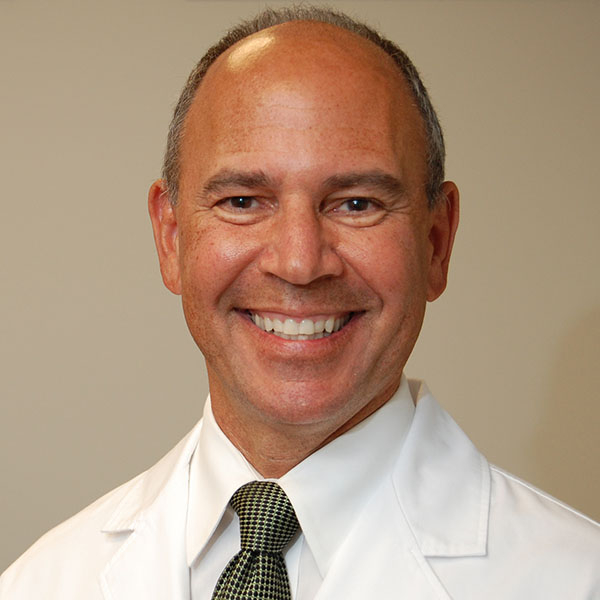
Is snuff really safer than smoking?

Snuff is a smokeless tobacco similar to chewing tobacco. It rarely makes headlines. But it certainly did when the FDA authorized a brand of snuff to market its products as having a major health advantage over cigarettes. Could this be true? Is it safe to use snuff?
What did the FDA authorize as a health claim?
Here’s the approved language for Copenhagen Classic Snuff:
If you smoke, consider this: switching completely to this product from cigarettes reduces risk of lung cancer.
While the statement is true, this FDA action — and the marketing that’s likely to follow — might suggest snuff is a safe product. It’s not. Let’s talk about the rest of the story.
What is snuff, anyway?
Snuff is a form of tobacco that’s finely ground. There are two types:
- Moist snuff. Users place a pinch or a pouch of tobacco behind their upper or lower lips or between their cheek and gum. They must repeatedly spit out or swallow the tobacco juice that accumulates. After a few minutes, they remove or spit out the tobacco as well. This recent FDA action applies to a brand of moist snuff.
- Dry snuff. This type is snorted (inhaled through the nose) and is less common in the US.
Both types are available in an array of scents and flavors. Users absorb nicotine and other chemicals into the bloodstream through the lining of the mouth. Blood levels of nicotine are similar between smokers and snuff users. But nicotine stays in the blood for a longer time with snuff users.
Why is snuff popular?
According to CDC statistics, 5.7 million adults in the US regularly use smokeless tobacco products — that’s about 2% of the adult population. A similar percentage (1.6%) of high school students use it as well. That’s despite restrictions on youth marketing and sales.
What accounts for its popularity?
- Snuff may be allowed in places that prohibit smoking.
- It tends to cost less than cigarettes: $300 to $1,000 a year versus several thousand dollars a year paid by some smokers.
- It doesn’t require inhaling smoke into the lungs, or exposing others to secondhand smoke.
- Snuff is safer than cigarettes in at least one way — it is less likely to cause lung cancer.
- It may help some cigarette smokers quit.
The serious health risks of snuff
While the risk of lung cancer is lower compared with cigarettes, snuff has plenty of other health risks, including
- higher risk of cancers of the mouth (such as the tongue, gums, and cheek), esophagus, and pancreas
- higher risk of heart disease and stroke
- harm to the developing teenage brain
- dental problems, such as discoloration of teeth, gum disease, tooth damage, bone loss around the teeth, tooth loosening or loss
- higher risk of premature birth and stillbirth among pregnant users.
And because nicotine is addictive, using any tobacco product can quickly become a habit that’s hard to break.
There are also the “ick” factors: bad breath and having to repeatedly spit out tobacco juice.
Could this new marketing message about snuff save lives?
Perhaps, if many smokers switch to snuff and give up smoking. That could reduce the number of people who develop smoking-related lung cancer. It might even reduce harms related to secondhand smoke.
But it’s also possible the new marketing message will attract nonsmokers, including teens, who weren’t previously using snuff. A bigger market for snuff products might boost health risks for many people, rather than lowering them.
The new FDA action is approved for a five-year period, and the company must monitor its impact. Is snuff an effective way to help smokers quit? Is a lower rate of lung cancer canceled out by a rise in other health risks? We don’t know yet. If the new evidence shows more overall health risks than benefits for snuff users compared with smokers, this new marketing authorization may be reversed.
The bottom line
If you smoke, concerns you have about lung cancer or other smoking-related health problems are justified. But snuff should not be the first choice to help break the smoking habit. Commit to quit using safer options that don’t involve tobacco, such as nicotine gum or patches, counseling, and medications.
While the FDA’s decision generated news headlines that framed snuff as safer than smoking, it’s important to note that the FDA did not endorse the use of snuff — or even suggest that snuff is a safe product. Whether smoked or smokeless, tobacco creates enormous health burdens and suffering. Clearly, it’s best not to use any tobacco product.
Until we have a better understanding of its impact, I think any new marketing of this sort should also make clear that using snuff comes with other important health risks — even if lung cancer isn’t the biggest one.
Follow me on Twitter @RobShmerling
About the Author

Robert H. Shmerling, MD, Senior Faculty Editor, Harvard Health Publishing; Editorial Advisory Board Member, Harvard Health Publishing
Dr. Robert H. Shmerling is the former clinical chief of the division of rheumatology at Beth Israel Deaconess Medical Center (BIDMC), and is a current member of the corresponding faculty in medicine at Harvard Medical School. … See Full Bio View all posts by Robert H. Shmerling, MD

Stepping up activity if winter slowed you down

If you've been cocooning due to winter’s cold, who can blame you? But a lack of activity isn't good for body or mind during any season. And whether you're deep in the grip of winter or fortunate to be basking in signs of spring, today is a good day to start exercising. If you’re not sure where to start — or why you should — we’ve shared tips and answers below.
Moving more: What’s in it for all of us?
We’re all supposed to strengthen our muscles at least twice a week and get a total at least 150 minutes of weekly aerobic activity (the kind that gets your heart and lungs working). But fewer than 18% of U.S. adults meet those weekly recommendations, according to the CDC.
How can choosing to become more active help? A brighter mood is one benefit: physical activity helps ease depression and anxiety, for example. And being sufficiently active — whether in short or longer chunks of time — also lowers your risk for health problems like
- heart disease
- stroke
- diabetes
- cancer
- brain shrinkage
- muscle loss
- weight gain
- poor posture
- poor balance
- back pain
- and even premature death.
What are your exercise obstacles?
Even when we understand these benefits, a range of obstacles may keep us on the couch.
Don’t like the cold? Have trouble standing, walking, or moving around easily? Just don’t like exercise? Don’t let obstacles like these stop you anymore. Try some workarounds.
- If it’s cold outside: It’s generally safe to exercise when the mercury is above 32° F and the ground is dry. The right gear for cold doesn’t need to be fancy. A warm jacket, a hat, gloves, heavy socks, and nonslip shoes are a great start. Layers of athletic clothing that wick away moisture while keeping you warm can help, too. Consider going for a brisk walk or hike, taking part in an orienteering event, or working out with battle ropes ($25 and up) that you attach to a tree.
- If you have mobility issues: Most workouts can be modified. For example, it might be easier to do an aerobics or weights workout in a pool, where buoyancy makes it easier to move and there’s little fear of falling. Or try a seated workout at home, such as chair yoga, tai chi, Pilates, or strength training. You’ll find an endless array of free seated workout videos on YouTube, but look for those created by a reliable source such as Silver Sneakers, or a physical therapist, certified personal trainer, or certified exercise instructor. Another option is an adaptive sports program in your community, such as adaptive basketball.
- If you can’t stand formal exercise: Skip a structured workout and just be more active throughout the day. Do some vigorous housework (like scrubbing a bathtub or vacuuming) or yard work, climb stairs, jog to the mailbox, jog from the parking lot to the grocery store, or do any activity that gets your heart and lungs working. Track your activity minutes with a smartphone (most devices come with built-in fitness apps) or wearable fitness tracker ($20 and up).
- If you’re stuck indoors: The pandemic showed us there are lots of indoor exercise options. If you’re looking for free options, do a body-weight workout, with exercises like planks and squats; follow a free exercise video online; practice yoga or tai chi; turn on music and dance; stretch; or do a resistance band workout. Or if it’s in the budget, get a treadmill, take an online exercise class, or work online with a personal trainer. The American Council on Exercise has a tool on its website to locate certified trainers in your area.
Is it hard to find time to exercise?
The good news is that any amount of physical activity is great for health. For example, a 2022 study found that racking up 15 to 20 minutes of weekly vigorous exercise (less than three minutes per day) was tied to lower risks of heart disease, cancer, and early death.
"We don't quite understand how it works, but we do know the body's metabolic machinery that imparts health benefits can be turned on by short bouts of movement spread across days or weeks," says Dr. Aaron Baggish, founder of Harvard-affiliated Massachusetts General Hospital's Cardiovascular Performance Program and an associate professor of medicine at Harvard Medical School.
And the more you exercise, Dr. Baggish says, the more benefits you accrue, such as better mood, better balance, and reduced risks of diabetes, high blood pressure, high cholesterol, and cognitive decline.
What’s the next step to take?
For most people, increasing activity is doable. If you have a heart condition, poor balance, muscle weakness, or you’re easily winded, talk to your doctor or get an evaluation from a physical therapist.
And no matter which activity you select, ease into it. When you’ve been inactive for a while, your muscles are vulnerable to injury if you do too much too soon.
“Your muscles may be sore initially if they are being asked to do more,” says Dr. Sarah Eby, a sports medicine specialist at Harvard-affiliated Spaulding Rehabilitation Hospital. “That’s normal. Just be sure to start low, and slowly increase your duration and intensity over time. Pick activities you enjoy and set small, measurable, and attainable goals, even if it’s as simple as walking five minutes every day this week.”
Remember: the aim is simply exercising more than you have been. And the more you move, the better.
About the Author

Heidi Godman, Executive Editor, Harvard Health Letter
Heidi Godman is the executive editor of the Harvard Health Letter. Before coming to the Health Letter, she was an award-winning television news anchor and medical reporter for 25 years. Heidi was named a journalism fellow … See Full Bio View all posts by Heidi Godman
About the Reviewer

Howard E. LeWine, MD, Chief Medical Editor, Harvard Health Publishing
Dr. Howard LeWine is a practicing internist at Brigham and Women’s Hospital in Boston, Chief Medical Editor at Harvard Health Publishing, and editor in chief of Harvard Men’s Health Watch. See Full Bio View all posts by Howard E. LeWine, MD

Ready to give up the lead vest?

At a dental appointment last month, I spotted a lead vest hanging unassumingly on the wall of the exam room as soon as I walked in. “Still there, but now obsolete,” I thought.
I’d just learned about new guidelines from the American Dental Association (ADA) saying lead vests and thyroid collars that cover the neck are no longer needed during dental x-rays. But they’d been a fixture of my dental experiences — including many cavities, four root canals, a tooth extraction, and two crowns — for my entire life. What changed, and could I feel safe without the vest?
Why were lead vests used in past years?
Lead vests and thyroid collars have been worn by countless Americans during dental x-rays over the years. They’ve been in use for far longer than my lifetime — about 100 years. The heavy apron-like shields are placed over sensitive areas, including the chest and neck, before the x-rays are taken.
“I haven’t worn a lead apron in the last 10 or 15 years — unless a dentist insists I put it on — because I know it isn’t needed,” says Dr. Bernard Friedland, an associate professor of oral medicine, infection, and immunity at Harvard School of Dental Medicine.
What has changed about dental x-rays?
When lead vests and thyroid collars were first recommended, x-ray technology was much less precise. But the technology has evolved significantly over the last few decades in ways that dramatically improve patient safety:
- Digital x-rays enable far smaller radiation doses, reducing radiation exposure and the risks associated with higher doses, such as cancer. “The doses used in dental radiology are negligibly small now. If you go to the dentist today for a full series of mouth x-rays that are taken with a digital sensor, the total exposure time is just over five seconds,” explains Dr. Friedland, an expert in oral radiology. “A hundred or so years ago, that exposure time would have been many minutes.”
- The small size of today’s x-ray beam significantly reduces radiation “scatter” and restricts the beam size to only the area needing to be imaged. This protects patients from radiation exposure to other parts of the body.
A less-recognized strike against using lead vests and thyroid collars is their ability to get in the way. They may block the primary x-ray beam, preventing dentists from capturing needed images. This quirk can lead to repeat imaging and unnecessary exposure to additional radiation. This is more likely to occur with panoramic x-rays.
The gear may also spread germs, Dr. Friedland notes. Although disinfected, it’s not sterilized between uses. “There’s a risk of spreading bacteria and viruses,” he says. “To me, that’s also an issue and another reason I don’t want to use one on myself.”
Who no longer needs the shields?
No one does — even children, who presumably have a long life of dental x-rays in front of them. The new recommendations apply to all patients regardless of age, health status, or pregnancy, the ADA says.
The recommendation to discontinue lead vests has been a long time in the making. In fact, the ADA isn’t the first professional organization to propose it. The American Association of Physicists in Medicine did so in 2019, followed by the American College of Radiology in 2021 and the American Academy of Oral and Maxillofacial Radiology in 2023.
Are some people confused or concerned about the no-lead-vest policy?
Yes. The new guidelines are bound to draw confusion and fear, Dr. Friedland says. Some people may even insist on continuing to wear a lead vest during x-rays.
“A big problem is that people’s perception of risk is very skewed,” he says. “Some people, you’ll never convince.”
People are likely to feel more comfortable if the practice is uniformly adopted by dentists. However, the ability to implement this change may hinge partly on public response. And it could take a while to fully adopt.
“I think the public is going to have more say on this than dentists,” Dr. Friedland says. “It might take a generation to make this change, maybe longer.”
Still concerned about the new recommendations?
If you have lingering concerns about the new recommendations, talk to your dentist.
And ask if dental x-rays are necessary to proceed with your diagnosis or treatment plan. Sometimes it’s possible to take fewer x-rays — such as bitewing x-rays of the upper and lower back teeth only — or to use certain types of imaging less frequently. Even with far safer x-ray conditions, dentists should be able to justify that the information from images is integral to diagnose problems or improve care, Dr. Friedland says.
It’s worth noting that the dose of radiation, while far lower than in the past, varies with the type of imaging and which parts of the jaw are being imaged. For example, the digital dental x-rays mentioned above involve less radiation than conventional dental x-rays. Either panoramic dental x-rays, or 3-D dental x-rays taken with a CBCT system that rotates around the head, typically involve more radiation than conventional dental x-rays.
Whenever possible, dentists should use images taken during previous dental exams, according to the ADA. “If I don’t need an x-ray, I don’t get one,” says Dr. Friedland. “I’m not cavalier about it. I also use technical parameters that keep the x-ray dose as low as reasonably possible.”
About the Author

Maureen Salamon, Executive Editor, Harvard Women's Health Watch
Maureen Salamon is executive editor of Harvard Women’s Health Watch. She began her career as a newspaper reporter and later covered health and medicine for a wide variety of websites, magazines, and hospitals. Her work has … See Full Bio View all posts by Maureen Salamon
About the Reviewer

Howard E. LeWine, MD, Chief Medical Editor, Harvard Health Publishing
Dr. Howard LeWine is a practicing internist at Brigham and Women’s Hospital in Boston, Chief Medical Editor at Harvard Health Publishing, and editor in chief of Harvard Men’s Health Watch. See Full Bio View all posts by Howard E. LeWine, MD